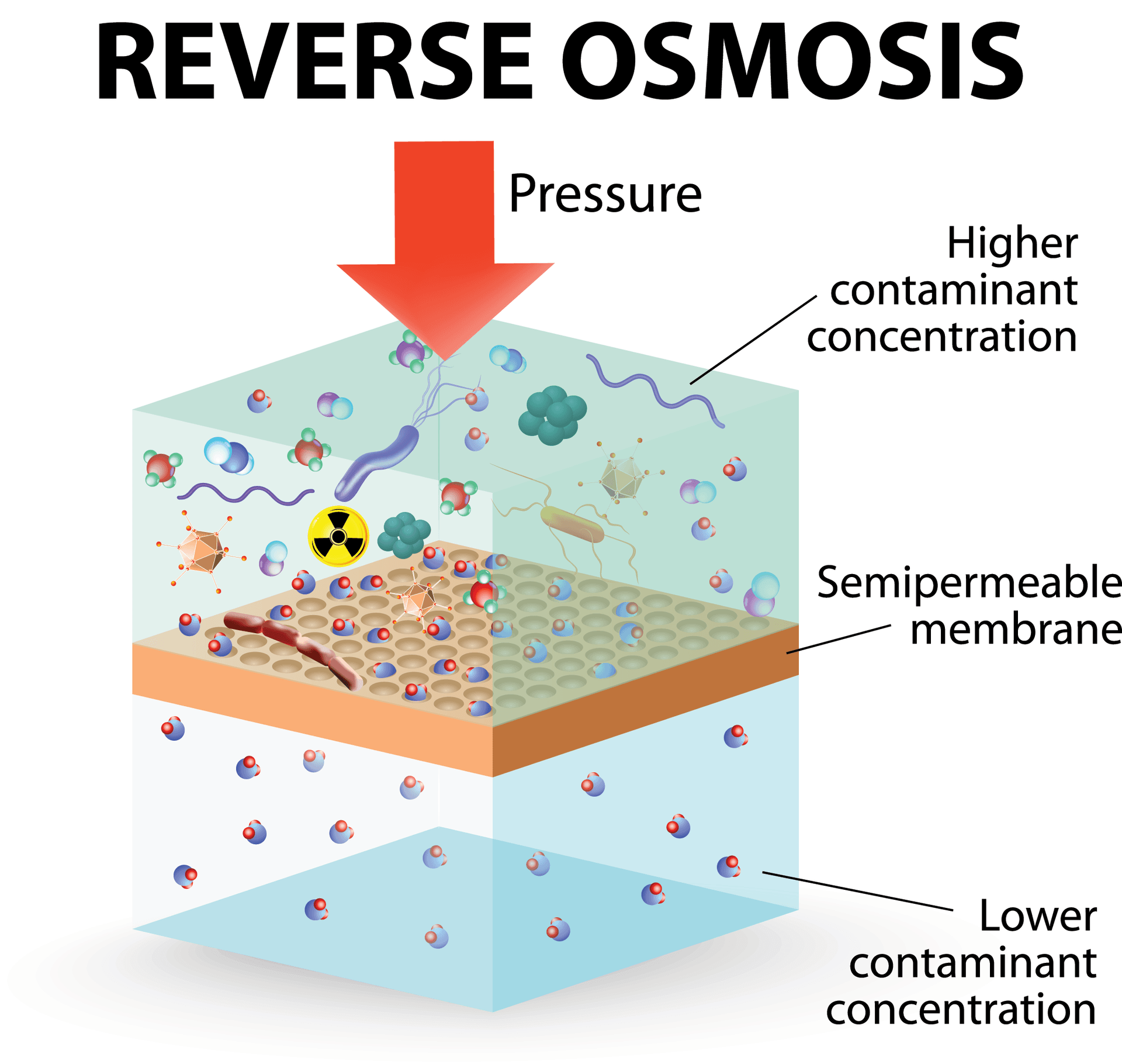RO or Reverse Osmosis water purifying systems are prevalent in Arizona. To help us with all the facts about RO systems, we spoke with Jon Owens from Rosie on the House Certified Partner, Kinetico Water Systems. Jon’s family goes back several generations in Arizona, and his knowledge of water in our state is quite deep (yes, the pun was intended). We hope this clarifies any questions you have about these systems.
Selecting A Water Purification System
Jon said there are some basic steps to go through when deciding which water purification system is right for you.
 The water itself. You need to identify the contaminants in your water. This can be accomplished in several ways. Municipal water systems and private company suppliers are required to test their water annually to determine the level of contamination for all elements listed by the Environmental Protection Agency (EPA). This list and results are published in a Consumer Confidence Report. The work is done by an EPA-certified laboratory and made available to you.
The water itself. You need to identify the contaminants in your water. This can be accomplished in several ways. Municipal water systems and private company suppliers are required to test their water annually to determine the level of contamination for all elements listed by the Environmental Protection Agency (EPA). This list and results are published in a Consumer Confidence Report. The work is done by an EPA-certified laboratory and made available to you.
If you are on a private well, you may want to expand on the basic test done by the well driller, which typically is only for e coli. In most of northern Arizona, arsenic is present in some quantity. Hiring a certified laboratory is critical to accurately determining what you need to filter out. Testing should be done every five years.
- Research is next. Start with epa.gov. They have a huge database focusing on addressing various contaminants with various technologies. Once you understand what process you need to use, you can research the products available through the National Sanitation Foundation or the Water Quality Association. These organizations can help you determine if a product you are considering has been certified to remove the contaminants in your water. Not all manufacturers are the same. Individual product performance is important, and the NSF/WQA can help you.
- Selecting a company to install a system is next. All of the tips on how to choose a contractor, apply here. The Rosie on the House Certified Partners is an excellent place to start. Make sure the company doing the installation is licensed through the Arizona Registrar of Contractors (ROC) and is bonded and insured. A reputable company will assist you in walking through the alphabet soup of agencies and selecting the water purification system that is right for your needs.
Filters
 Now, let’s focus on one of the most popular and prevalent systems, Reverse Osmosis. This system operates by pushing water through what is known as a “semi-permeable membrane.”
Now, let’s focus on one of the most popular and prevalent systems, Reverse Osmosis. This system operates by pushing water through what is known as a “semi-permeable membrane.”
This is done under pressure, and as the water is forced through the membrane, targeted contaminants are removed. The membrane is protected by two filtration systems as well. The “pre” filter is designed to collect water-born sediments before getting to the membrane. The second filter is the “post” filter. This filter mainly addresses issues that affect odor and taste. These are the filters that require changing on a regular basis. Consult with your system’s manufacturer to determine the frequency you need to do this. Your owner’s manual should give you the necessary information to select the best product for the exchange, as well as the timing.
Timing is not standard for all systems. Some recommend changing every two to three months, and others at longer intervals. The RO membrane itself is typically changed every nine months to a year. Again, check with your system’s manufacturer, as higher end units’ membranes will last longer.
Jon tells us there are only about ten or twelve water purification system manufacturers globally that build for multiple brands. Paying attention to where and how the system was built is a component of what system to select. Not all manufacturers are created equal. Jon further recommends researching reviews of various products before making a final selection.
Changing your system’s filters is a process as varied as the number of brands out there.
One aspect of changing the filters is the sterilization of the lines. Since the water coming out of your system is so clean, it is ripe to pick up new contaminants.
Systems vary in the level of complexity and skill necessary to change the filters. If the system is not reassembled correctly or the filters are installed incorrectly, the functionality of the whole system can be compromised or worse yet, damaged. Common insurance claims revolve around broken water purification system parts that end up leaking and damaging surrounding finishes in your home.
Some systems are simple to deal with, while others can be complicated. Consult your owner’s manual and if you are in doubt about your skill level, ask for advice or hire a professional.
###
CONTENT PARTNER | Kinetico Water Systems

Kinetico Water Systems whole-house water treatment systems can benefit nearly every aspect of users’ lives. They offer a free water analysis with a water filtration expert who will provide the data, so you can make an informed decision for your home. Call Kinetico Water today for more information.
PODCAST
Reverse Osmosis water purifying systems are prevalent in Arizona because they remove extra materials and produce cleaner tasting water. We discuss the Reverse Osmosis process and tackle homeowner air conditioning questions too!
Podcast Archive With Expanded Content and Resources
PHOTO CREDIT
- Shutterstock

















